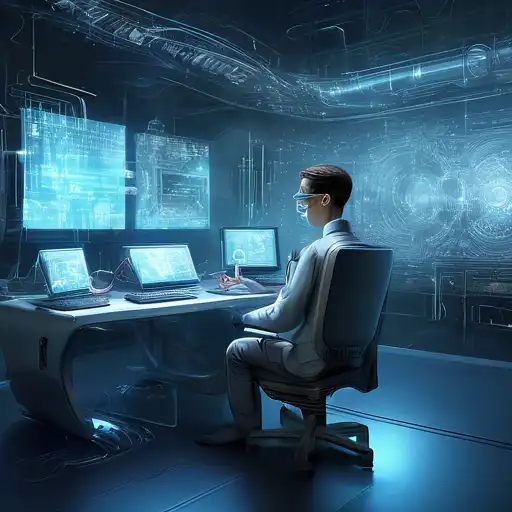Introduction to Computer Vision Technology
Computer vision technology has undergone significant transformations over the past few years, becoming a cornerstone in the development of artificial intelligence (AI) and machine learning (ML) applications. This technology enables machines to interpret and understand the visual world, mimicking human vision but at a scale and speed that is unimaginable for humans.
Recent Breakthroughs in Computer Vision
Recent advancements in computer vision have been largely driven by deep learning, a subset of machine learning that uses neural networks with many layers. These developments have improved the accuracy and efficiency of image recognition, object detection, and facial recognition systems. For instance, convolutional neural networks (CNNs) have become the backbone of many computer vision applications, offering unprecedented accuracy in tasks such as classifying images into thousands of object categories.
Applications of Advanced Computer Vision
The applications of computer vision are vast and varied, spanning across industries. In healthcare, it's used for diagnosing diseases from imaging scans with higher precision than ever before. In the automotive industry, computer vision is critical for the development of autonomous vehicles, enabling them to navigate safely by recognizing traffic signs, pedestrians, and other vehicles. Retailers are leveraging this technology for inventory management and enhancing customer experiences through personalized recommendations based on visual search.
Challenges and Future Directions
Despite its advancements, computer vision technology faces challenges such as the need for large datasets for training models and issues related to privacy and ethical concerns, especially in facial recognition. However, ongoing research is focused on overcoming these hurdles, with innovations like few-shot learning aiming to reduce the dependency on massive datasets. The future of computer vision is bright, with potential breakthroughs that could further revolutionize how machines understand and interact with the visual world.
Conclusion
The evolution of computer vision technology is a testament to the rapid progress in AI and ML. As it continues to advance, it will open up new possibilities across various sectors, making our interactions with technology more intuitive and seamless. The journey of computer vision from a niche research area to a mainstream technology highlights its potential to shape the future of technology and society at large.
